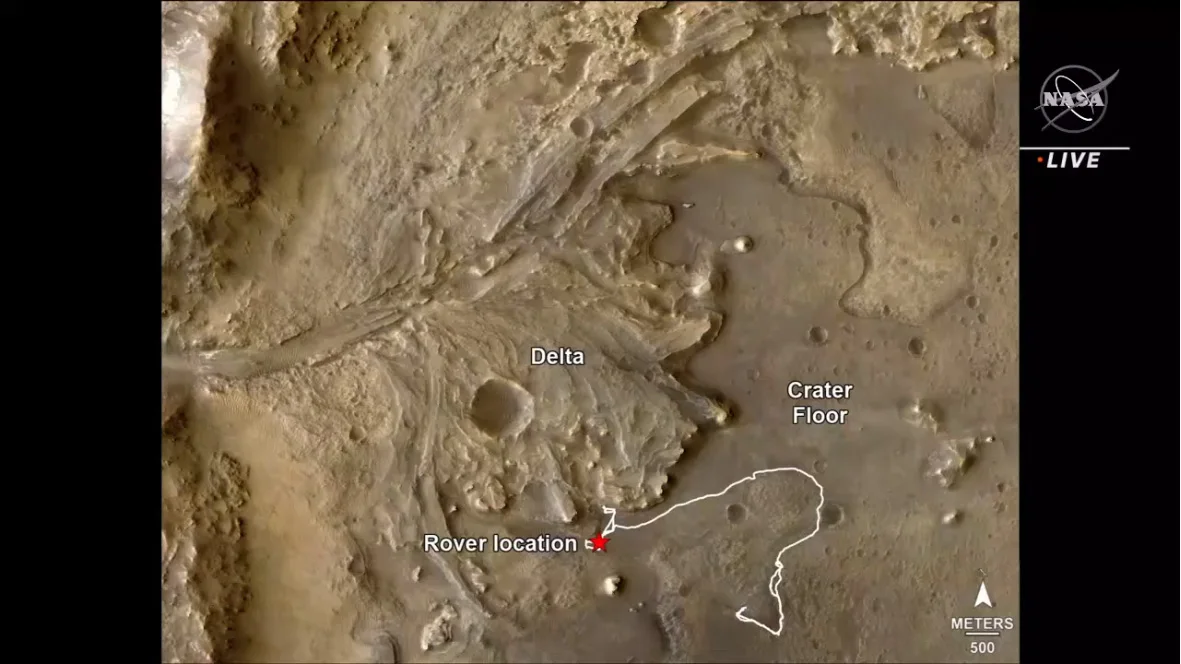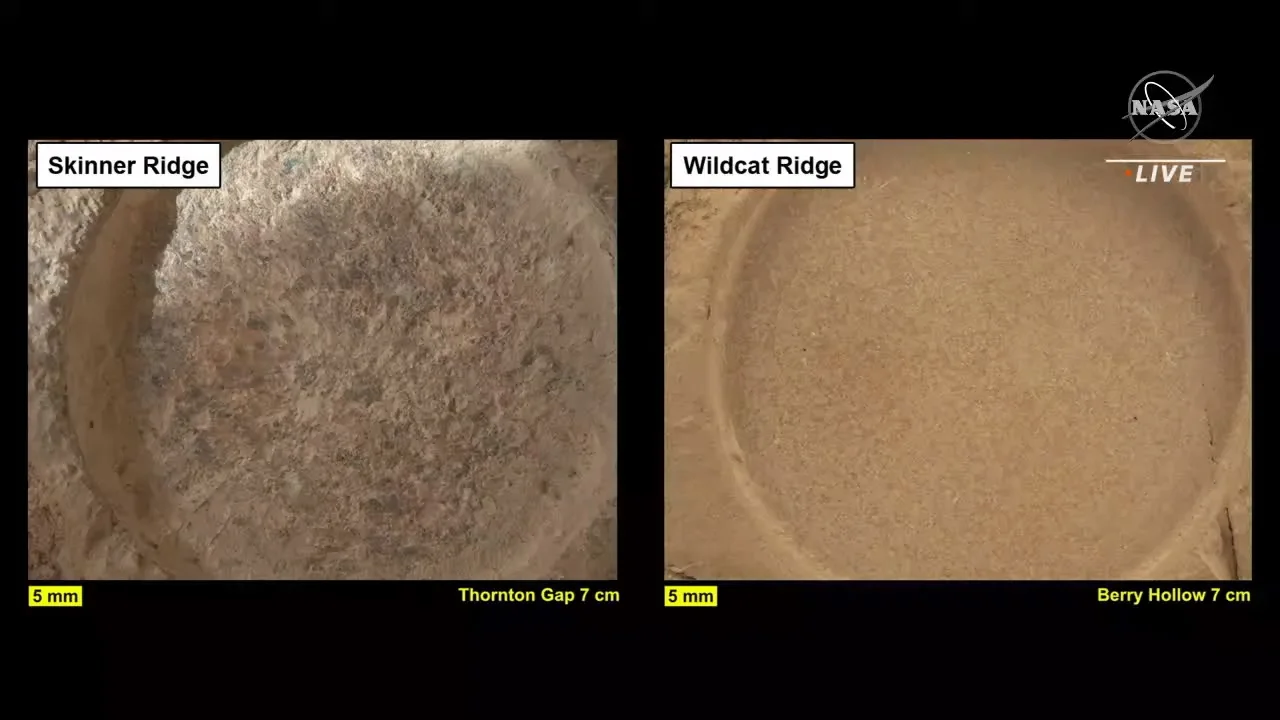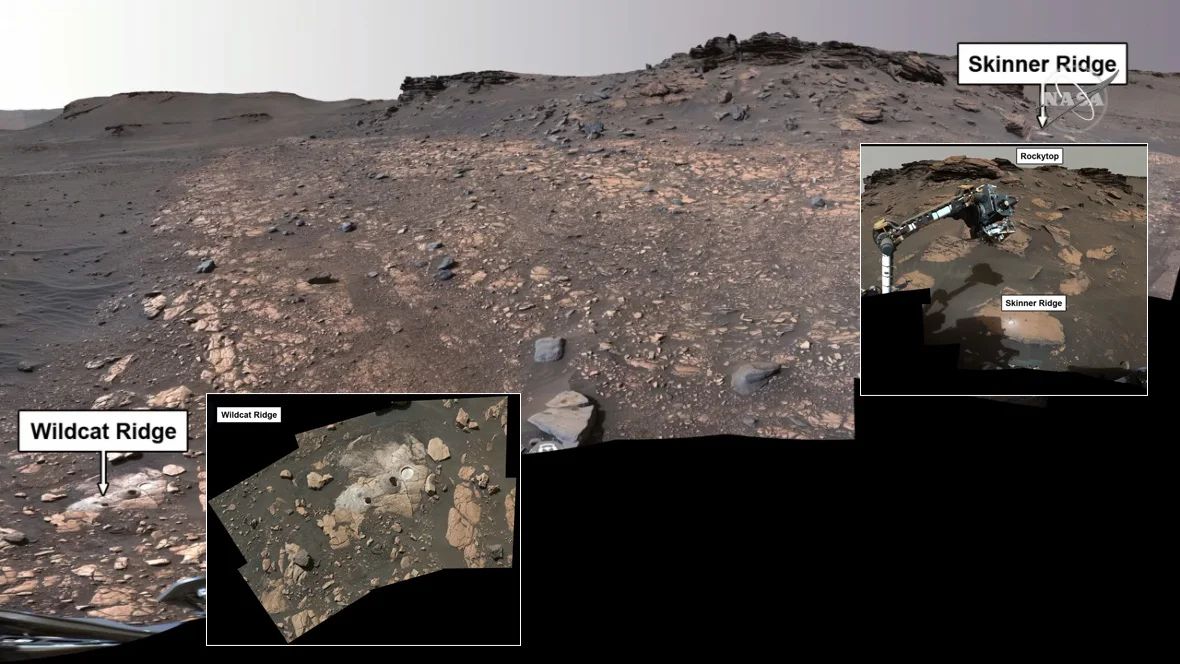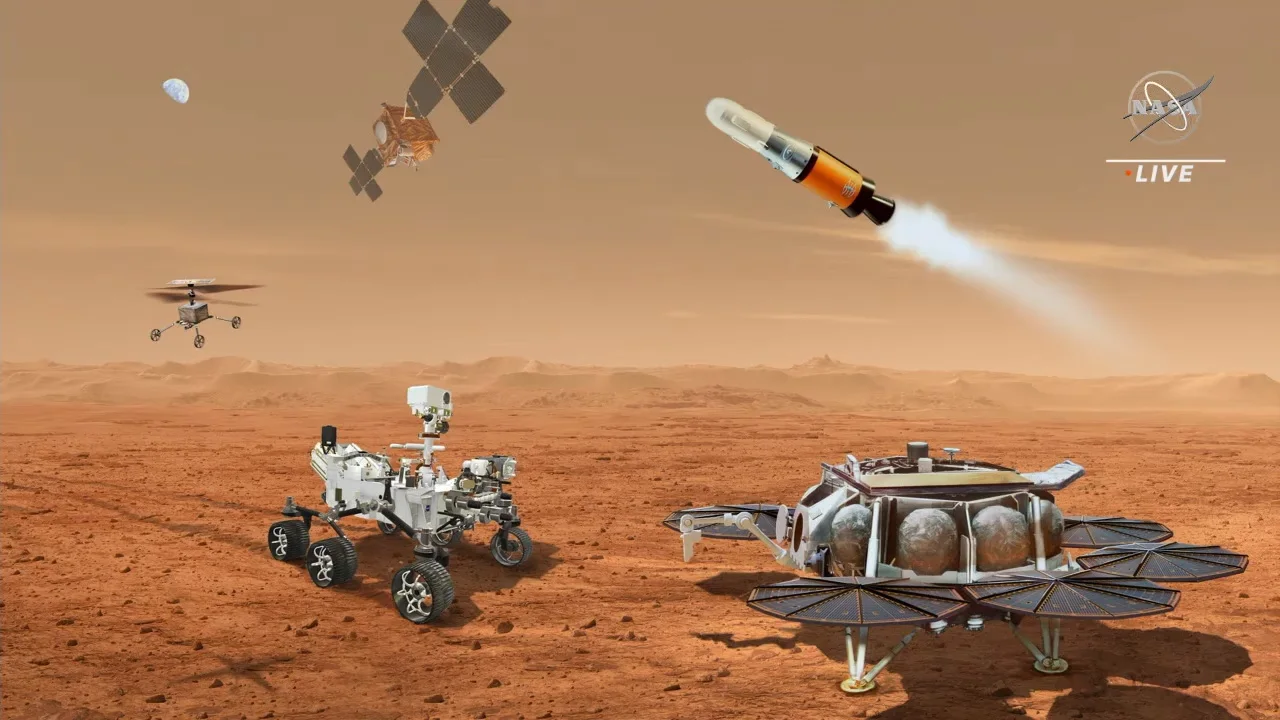
Perseverance finds strongest signs yet of ancient life on Mars
These 'potential biosignatures' are an exciting discovery for the mission scientists.
Exploring the 'delta front' of Jezero Crater, NASA's Perseverance rover has found the strongest signs yet that life once existed on Mars.
Are we alone in the universe? This is one of the most important questions that science has been trying to answer for us. Building on previous discoveries, the Perseverance rover is helping answer that question. If it found evidence that there was once life on Mars, a planet that was once warmer and wetter but is now very inhospitable, there is a good chance that life is abundant throughout the cosmos.
Perseverance is currently roving next to an ancient river delta on Mars, taking samples and using its instruments to scan the various rock deposits. Here on Earth, river deltas are teeming with life. They are also places where the signs of past life — organic compounds — become concentrated in the layers of sediment and rock as they build up over time. So, if life did develop on Mars long ago, a river delta like the one in Jezero crater is just about the best place to look for those same signs of life.

This map of the western edge of Jezero Crater shows the path of the Perseverance rover since its mission began in February 2021 (white line), and the rover's current location (red star). Credit: NASA
When the rover collected two of its latest samples, from Skinner Ridge and Wildcat Ridge, it sent back some exciting results.
While the rocks appear quite different, they both formed in a habitable environment. That is, the conditions at the time and place where these rock deposits were laid down were friendly to life as we know it. However, the fine-grain structure and lighter colour of the Wildcat Ridge sample made it particularly interesting.

These two abrasion patches show the Skinner Ridge sample rock (left), which is made of larger rounded grains cemented together, and the Wildcat Ridge sample rock (right), which is smooth and fine-grained. Both are exactly the kind of rocks NASA is looking for to find potential biosignatures. Credit: NASA
"In the distant past, the sand, mud, and salts that now make up the Wildcat Ridge sample were deposited under conditions where life could potentially have thrived," Perseverance project scientist Ken Farley, from Caltech, said in a NASA press release.
Scanning the Wildcat Ridge abrasion patch using SHERLOC, the Scanning Habitable Environments with Raman and Luminescence for Organics and Chemicals, Perseverance detected a treasure-trove of organic compounds.
"In Wildcat Ridge, we detected signals that we think are from a class of organic matter called aromatics, which are stable molecules made up of carbon, hydrogen, and sometimes other elements, with ring structure," Sunanda Sharma, the SHERLOC scientist at NASA's Jet Propulsion Laboratory, said during a press briefing on these results on Thursday.
"These signals were present in nearly every single point, in every scan. They are also some of the brightest that we've seen thus far on the mission, and they are about seven times brighter than what we saw at Thorton Gap, which is the abration patch on Skinner Ridge," Sharma explained.
According to Sharma, these aromatics were found alongside sulphate minerals. Similar conditions have been found here on Earth, where sulphates tend to preserve organic compounds. This suggests that these Martian organics and sulphates were deposited and concentrated in this location of the delta as the lake in Jezero Crater dried up.
"This makes these samples and this set of observations some of the most intriguing that we've done so far on the mission, and it fulfills some of the excitement that the team had when we were approaching the delta front," Sharma said.
This discovery confirms that Perseverance was definitely sent to the right place on Mars, with the right set of tools, to conduct its search for signs of ancient life.

This composite image of the delta front puts the rover's latest samples into context, showing the locations of the Wildcat Ridge and Skinner Ridge sampling areas. The inset views show mosaic views from the rover of each after a sample was drilled from the rock. Credit: NASA/Scott Sutherland
But what's the truly exciting part of all this? Perseverance's SHERLOC instrument picked up signs of organic matter in these rocks. While the rover has already found organic compounds in other areas of the crater, the Wildcat Ridge sample showed the strongest detection of organics so far!
Signs of life? Maybe...
What Perseverance has found here are 'potential biosignatures'.
Finding organic compounds in the rock samples isn't a definitive sign of life. Something being an "organic" compound simply means that the molecules contain carbon atoms (and usually hydrogen, oxygen, and other elements like nitrogen, phosphorus and sulphur). While many organic compounds are part of biological life forms or are produced by those life forms, some are formed through geological processes. So, just detecting organics isn't a definitive sign of life.
To find 'definitive biosignatures' — absolutely conclusive proof that life existed on Mars at one time — we'll need to wait.
"The fact the organic matter was found in such a sedimentary rock — known for preserving fossils of ancient life here on Earth — is important. However, as capable as our instruments aboard Perseverance are, further conclusions regarding what is contained in the Wildcat Ridge sample will have to wait until it's returned to Earth for in-depth study as part of the agency's Mars Sample Return campaign," Farley explained in the NASA press release.
Mars Sample Return
So, how long of a wait do we have?
Lori Glaze, the director of NASA's Planetary Science Division, laid out the timeline of the Mars Sample Return campaign during Thursday morning's briefing.
"The Earth Return Orbiter, that will carry the samples back to Earth, is expected to launch in 2027 in our current design," Glaze said. "The Sample Return Lander will launch a few months later, in the spring of 2028."

This artist's conception drawing shows the different elements of the Mars Sample Return campaign, with the lander (bottom right), sample retrieval drone (centre, left), Mars ascent vehicle (top right), and Earth Return Orbiter (top), all cooperating with Perseverance to complete the mission. Credit: NASA/JPL-Caltech
When the Sample Return Lander arrives, it will use two drone helicopters similar to Ingenuity to collect the sample tubes from where Perseverance has dropped them on the surface. Meanwhile, the rover will also drive to the lander's position to add the rest of its samples to the return payload.
As Glaze explained, those samples will be launched into orbit around Mars sometime in 2030, and they will make the trip on board the Earth Return Orbiter to arrive here on Earth in 2033.
With direct access to those samples and the most advanced laboratories on Earth, scientists can confirm the source of the organic compounds and perhaps bring us one step closer to knowing if alien life really exists.











